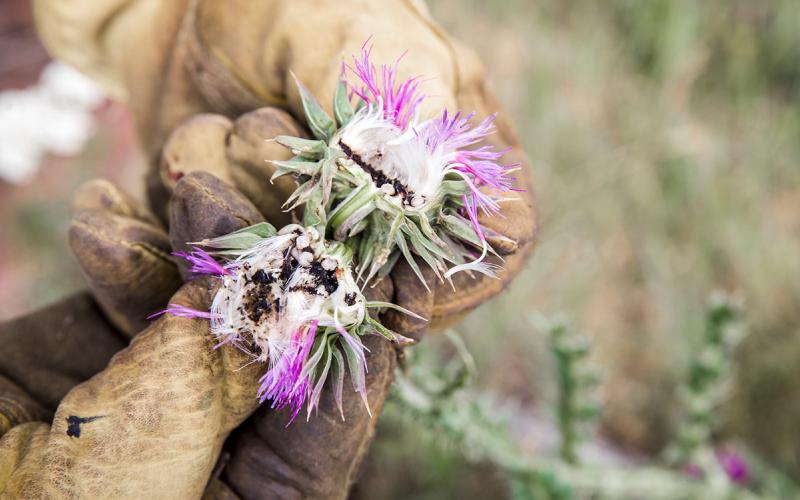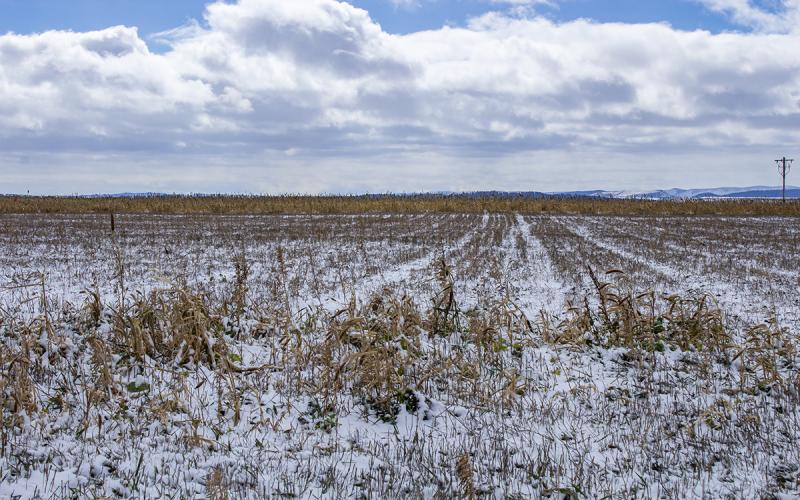Originally written by Ruth Beck, former SDSU Extension Agronomy Field Specialist.
Scouting is the process of monitoring fields and crops during a growing season. It can provide producers with field specific information on pest pressure and crop injury. Scouting has become more valuable in recent years because input costs and crop prices have risen significantly, justifying the time and expense associated with scouting. Information obtained from scouting is essential to the appropriate selection and application of pest management procedures and can also be used to help with management decisions for succeeding crops.
Scouting is a major component of Integrated Pest Management (IPM). IPM is based on the premise that chemical pest treatments should only be applied if pest populations are present and determined to be potentially damaging in the field.
Crop scouting in wheat should be conducted throughout the growing season, but there are 5 growth stages where scouting is highly recommended. These include the 2 leaf stage where stand counts, weeds and diseases should be assessed. At the 4-5 leaf stage, fields should be scouted again for weeds, diseases, stand, color and insects. The third stage is at flag leaf. The crop will be monitored for weeds, insects and diseases. The flowering stage is the fourth time to scout and many of the same concerns exist at this stage but conditions relating to Fusarium Head Blight (FHB) should also be assessed at this time. The last scouting period is when the crop reaches physiological maturity. The concern at this time is with weeds that may need to be controlled during a pre-harvest herbicide treatment, timing for harvest and/or other issues that could become a problem in the next crop.
It is a good idea when scouting a field to carry some basic equipment; a pocket knife, hand lens, camera and reference material to help with pest ID. If plant and insect samples need to be collected it may also be necessary to have ziplock bags, paper towels, and screw top vials filled with alcohol on hand. A sweep net can help catch insects. Scouting should also include record keeping, so even if control methods are not warranted, the pest occurrence can be documented for future reference.
It is important also to remember when scouting and sampling fields, that the entire field should be assessed. The number of samples and the sampling locations should represent the entire field. Weed patches and insects can often be localized and not uniformly distributed across the field. Knowledge of a pests’ life cycle can help to dictate sampling locations.
There are three general scouting patterns:
- Scouting for pests that are typically distributed evenly across the entire field can be done by following a transect in a circular “W” or a “Z” pattern.
- When pests are associated with a particular field situation, such as wet areas or field access points, then sampling should be concentrated in these areas.
- Certain insects are known to concentrate on the edges of fields, but may get into the field as well. Scouting the margins of the field first will provide a good indication as to whether the rest of the field should be sampled.
Proper sampling and scouting techniques can help growers with input decisions and greatly improve profit but it can also avoid the unnecessary use of pesticides.


